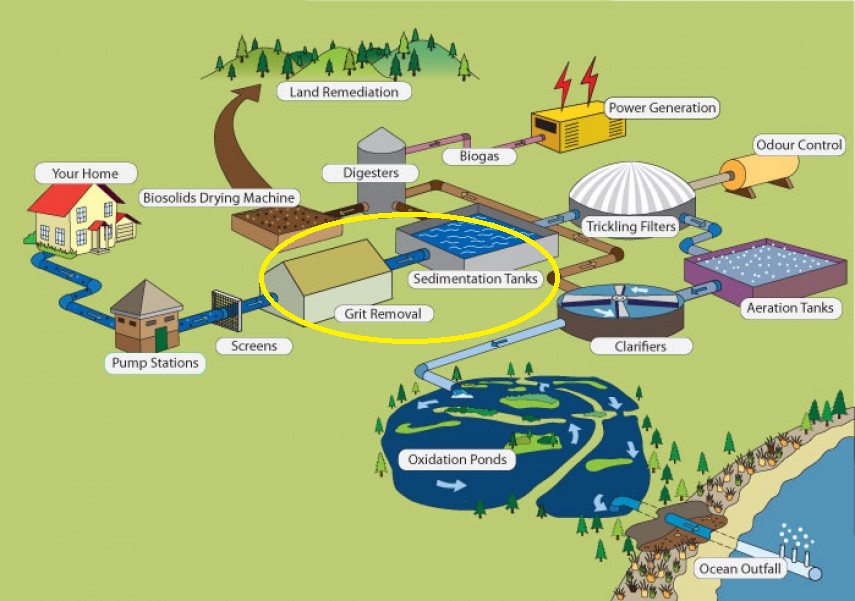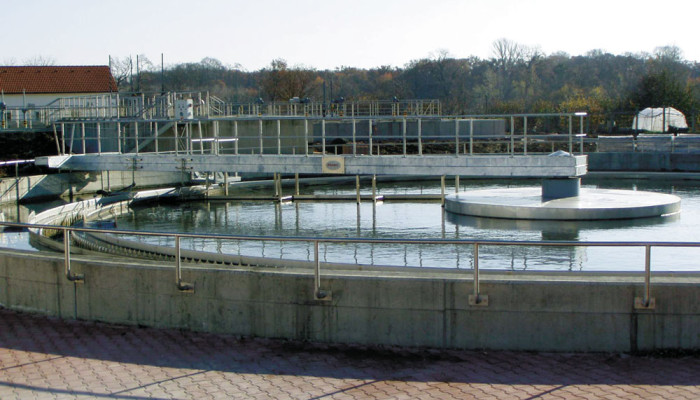Primary Treatment: The first steps in removing smaller particles from the wastewater. It is usually comprised of a grit removal system and sedimentation tanks.

Hydraulic Retention Time: The time that the fluid is held within a certain part of the process.
Total Suspended Solids (TSS): The solids in the fluid that are large enough to be filtered out. They can be organic or inorganic.
The process of removing sand, silt and grit from the wastewater Sand can cause efficiency and maintenance issues for later steps in the facility Ineffective grit removal can increase energy demand for the process.
The removal of smaller particles (sand, silt, clay etc.) that were not removed from the screening process. Grit removal is important for reducing maintenance issues later in the process.

Grit removal is an important step for water treatment early on. It is commonly done using gravity as shown above.
There are three different types of grit removal systems. They are: vortex grit chambers, centrifugal separators, and aerated grit chambers.
The way grit is removed is heavily dependent on the design of the removal system and what kind/how much grit comes through the facility.
Energy efficiency recommendations at this step would be hard to define unless it is operating at times when it doesn't need to.
Approximately 50-70% of the incoming total suspended solids are removed at this point Generally sedimentation tanks have a retention time of 2-3 hours Settled and floating solids (primary sludge) are scraped and skimmed from the bottom and the top of the tanks and processed (this will be explained later in the module)
The water leaving this portion of the process is referred to as primary effluent.
he use of tanks of various shapes to remove organic and inorganic matter that settles and floats. They often include mechanical arms to scrape the settled matter at the bottom and skim the floating matter at the top.

The organic and inorganic matter scraped and skimmed from the sedimentation tanks are collected as sludge and processed. (This will be explained later in the module)
Energy efficiency recommendations regarding the sedimentation tanks would be hard to define unless they are operating more than necessary.